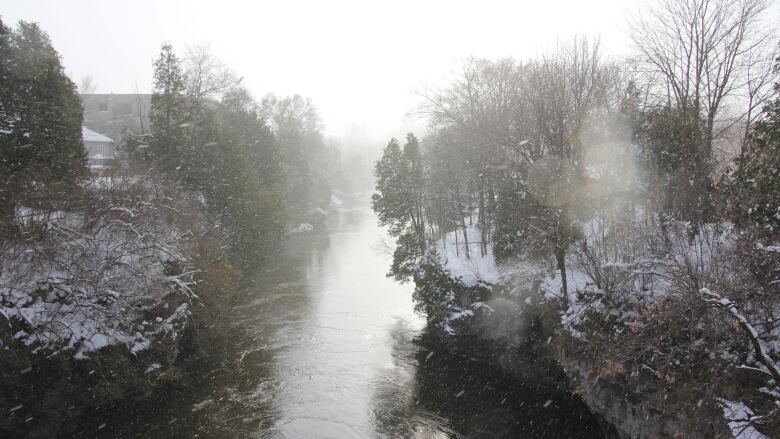Prevent basement flooding this winter: 3 tips from experts

Environment Canada is forecastingsnow and rain with a steady thaw coming over the next few daysfor Waterloo Region this weekend.
That could mean a whole lot of extra water in and around your home, given the snow that's accumulated over the past week.
Last February, CBC Kitchener-Waterlooconsulted three experts fortips on how to prevent flooding in your basement. In case you missed it, here's what they had to say:
Clear snow away from your home
Advice from MikeSeiling, director of building for the city of Kitchener:
"[R]emoveexcess snow from the roof,excess being amounts greater than two feet. Be very careful, because in addition to the snow up on the roof, there will be some ice underneath some of that snow.
Another area to prevent water [from] coming inside ones house would be to remove the snow thats piled up directly at the overhang andeavestroughto expose theeavestrough, whether frozen or not. What happens is, where there [are] large quantities of snow on the overhang and theeavestroughsare covered in snow, the water willback up. It will enter below the shingles and could enter below the house.
The other opportunity for water to enter the house is through the basement. If thedownspoutsarent clear and free of snow and ice, water will overflow the downspout and could enter through any cracks in the foundation. Its wise to keep the downspouts free and clear of snow and ice.
Check your sump pumps
Advice from Mark Turner, Turner Home Inspections:
Its very important to make sure our sump pumps are working properly, especially in Waterloo Region where we have a lot of clay in the soil.The typical homeowner can go down just check their pump by lifting the float up and making sure its running properly or dumping water into the sump pumppit to make sure that the pump is actually running.
Whats going to happen is that waters going to permeate through the ground right by the foundation and go right into the weeping tiles, which is going to make our sump pumps run like theres no tomorrowuntil it gets rid of all the excess water. Making sure that sump pump is running is going to be really important.
Look for basement gaps, considerdrainage
Advice from DanSandink, manager of Resilient Communities Research at The Institute for Catastrophic Loss Reduction:
You want to look where utilities like hydro and maybe cable TV come into your basement and see if theres a gap that might be around where those utilities come into your basement. Consider moving snow away from those areas or possibly even sealing up those gaps to reduce the amount of water that might come in your home.
Another thing you want to do around your home is look at how your downspouts are draining away from your home. In general, you want to make sure that water drains away from your home as far away... as possible. If you have a downspout thats draining directly beside your foundation wall, you want to make sure the water can clear the foundation area safely, or possibly even redirect your downspout a few feet away from your foundation wall and make sure the water flows off of your property safely. This might involve clearing a bit of snow out of the way to make sure the water can flow toward the street or to a catch basin on your property.












_(720p).jpg)


 OFFICIAL HD MUSIC VIDEO.jpg)
.jpg)



























































































